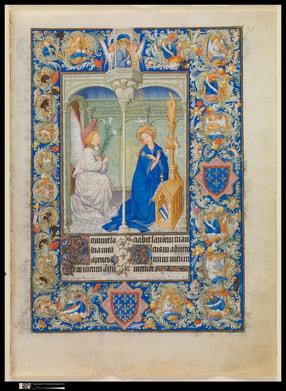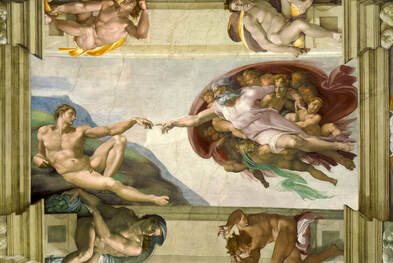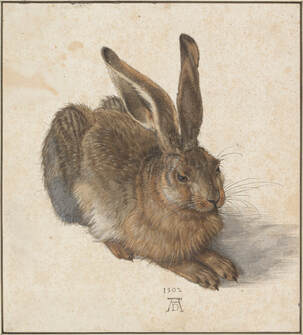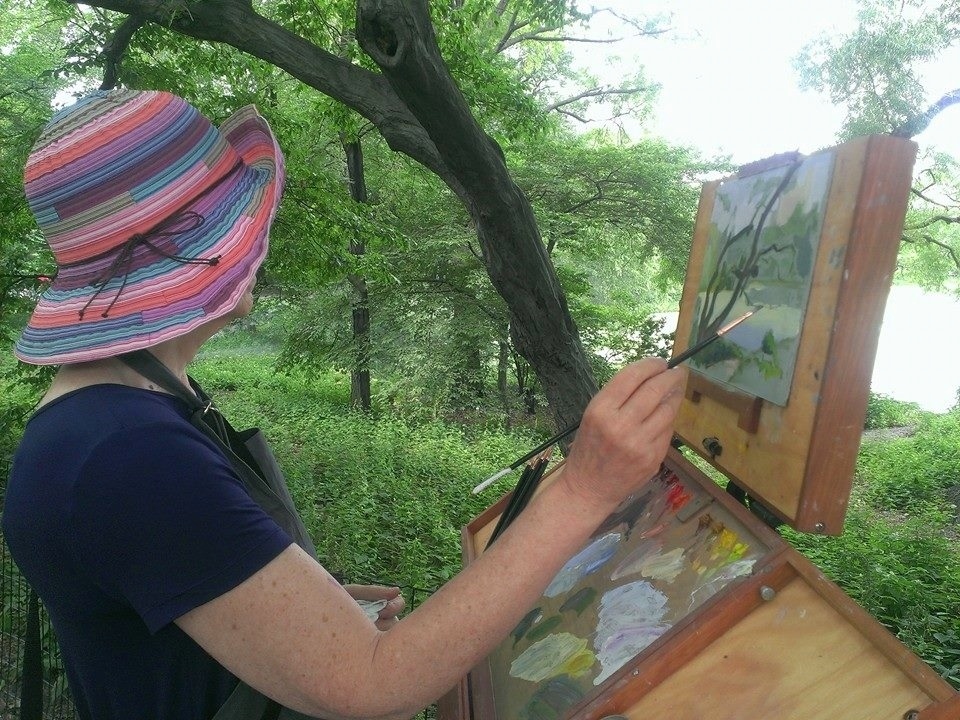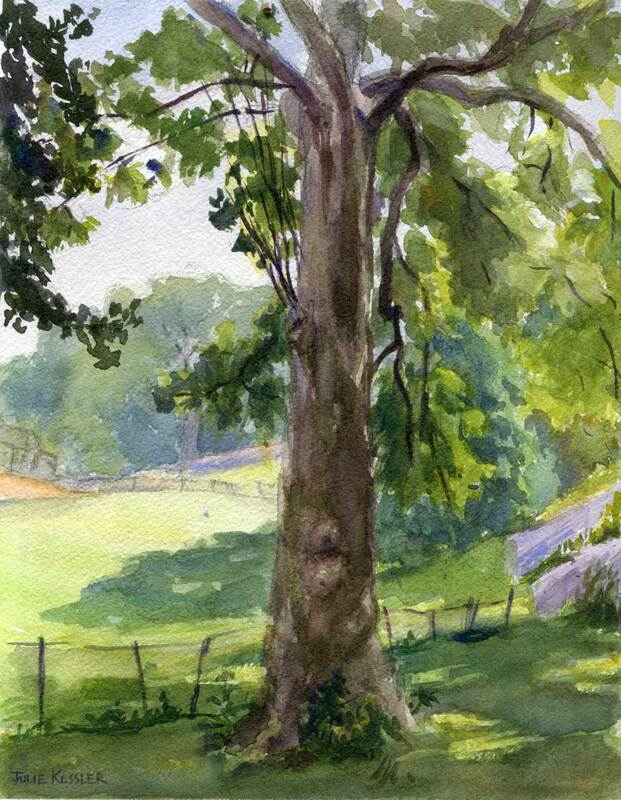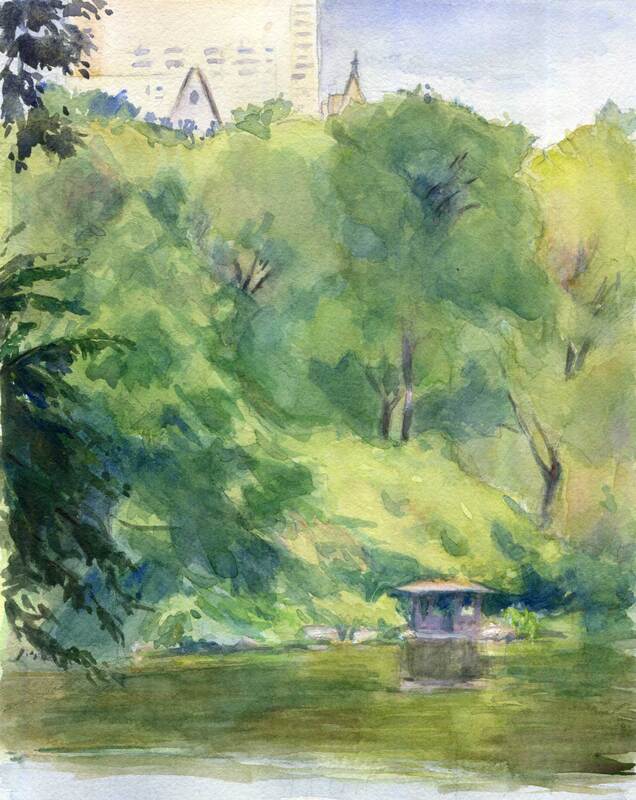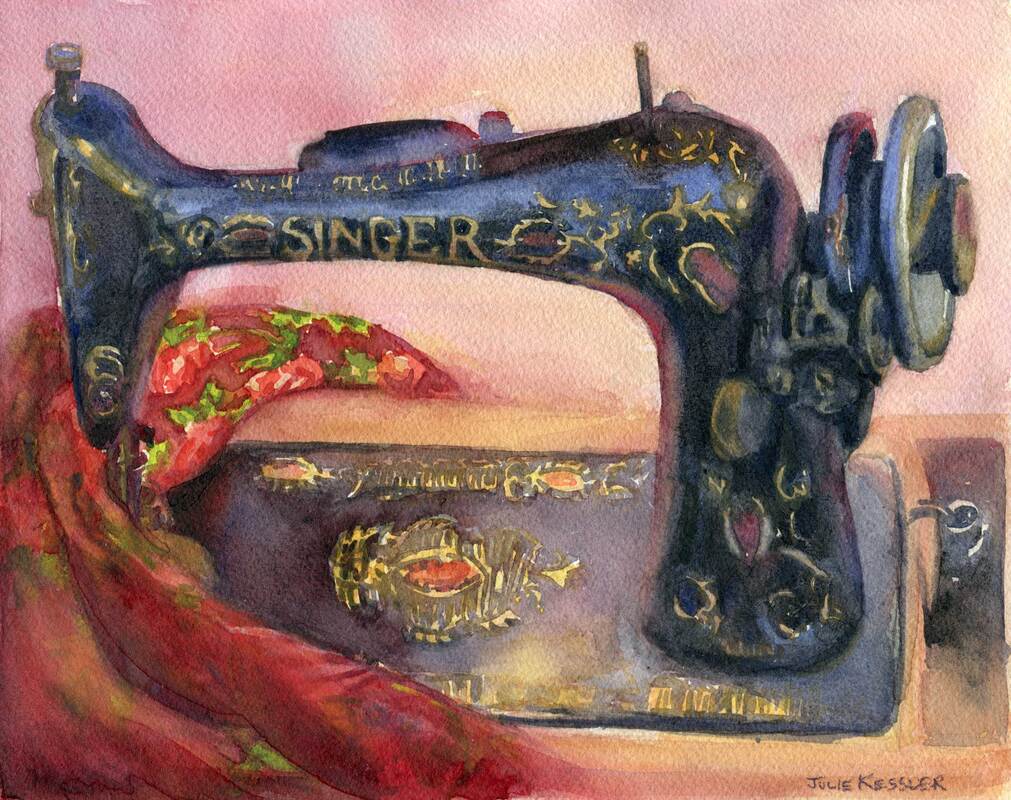The small tempera painting above, by Italian artist Duccio, depicts a tender, intimate moment between the Virgin Mary and the baby Jesus. The infant reaches up to his mother's face, a face saddened by the premonition of her darling child's death on the cross. It's a poignant, very human moment, and yet seems simultaneously sacred and divine. How otherworldly this painting must have looked back when it was in its original setting, enveloped in a glowing field of gold in the flickering light of a candle.
It was when the aristocracy got into illuminated manuscripts that these books really took off and became things of unimaginable beauty. Illustrated by the very best artists. "Illuminated" with silver and gold. And lavishly decorated with the priciest color of all, a rich, royal blue made from lapis gemstones. They were gorgeously, elaborately painted in tempera on vellum, a thin material made from the skins of unborn calves.
One of the most famous and exquisitely illuminated manuscripts of them all is the Book of Hours, or Les Tres Riches Heures. Painted by renowned Dutch artists, the Limbourg Brothers. It was commissioned in France by the Duke of Berry, a voracious patron of the arts. A book of hours was supposed to be a private prayer book for connecting with the Virgin Mary at set times of the day. But the art-besotted Duke kept adding more and more pages and themes to his book. Maybe he just couldn't bear to clip the creative juices of the magnificent Limbourgs while they were on a roll!
How Michelangelo could paint such a fabulous, ginormous design way up high on the ceiling, getting it done before the plaster was dry is beyond me. Of course he didn't paint the whole chapel at once, only section by section, but still. And the poor guy never even wanted to start this project. He kept trying to beg off, claiming he was no painter. Actually he was dying to get back to work on his life's real passion, his sculptures. But no, Pope Julius II wouldn't hear of it. So instead of marble, Michelangelo "carved" figures out of paint, twisting and turning them in three-dimensional positions that made them look just like sculpture. Turns out that Michelangelo could really paint after all. He chose gorgeous colors of great delicacy, and his massive figures were incredibly graceful, full of ideal beauty and elegance.
The Creation of Adam is just one scene in the chapel that Michelangelo painted from the Bible's Book of Genesis. It shows the moment before God gave life to man. Adam, made out of dust, passively waits for the spark of creativity that comes from divine consciousness. Much like Michelangelo himself, who believed that his own creativity came only through the grace of God.
So what's the difference between watercolor and gouache? Well, they're both made from the same basic ingredients. Ground pigments mixed with gum arabic and water. Only gouache has more pigment than watercolor, and the pigment is ground into larger particles. It also contains white pigment, which kicks up its opacity and gives it a slightly chalky look. Gouache, a French word coming from the Italian "guazzo", or mud, gives you an idea of its nature in comparison to the more luminous, transparent quality of watercolor.
Dürer's masterpiece, Young Hare, is painted in great scientific detail. He skillfully indicates the texture of the fur and seemingly every strand of hair and whisker on the body. He bathes the animal in a warm, golden light that gives it life. What an amazing accomplishment! How could he possibly have observed that hare so closely, and gotten such a skittish creature to sit so still? One theory is that he used a stuffed hare as his model, but perhaps Dürer was some kind of wizard with a special knowledge of magic. We may never know.
Well, I hope you've enjoyed this week's installment. Stay tuned for Part III.
Click on the comment section below to add your questions and comments.

